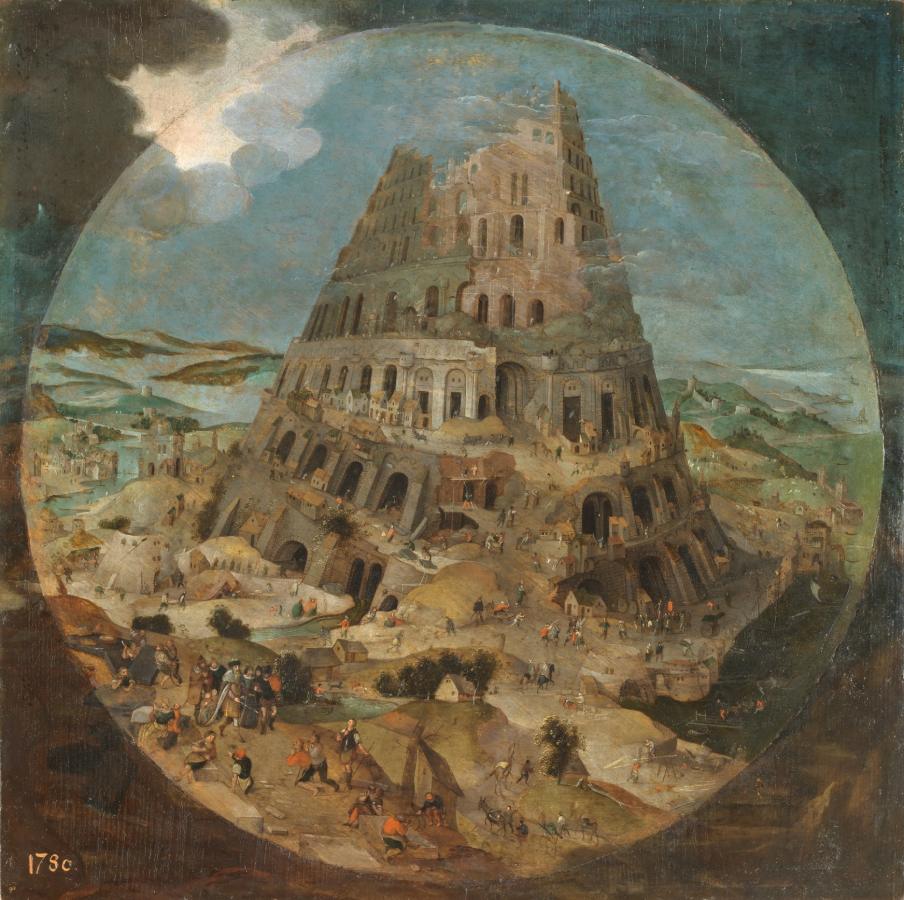Brueghel, Pieter the Younger (1564-1638)
The Building of the Tower of Babel
c.1595
Oil on panel, 43.2 x 42.9 cm
Museo del Prado, Madrid
Attributed to Peter Brueghel the Younger, this small panel, from the collections of the Palace of La Granja, represents a fascinating legendary metaphor, the construction of the Tower of Babel. It is one of the great myths of architecture and language, of biblical origin, which has received successive added meanings over time, complementing the narrative and its implications, including Masonic and esoteric ones. In the same way, the figuration of the myth has known since the Middle Ages different variants of the form and content of the representation, including its absence after being demolished. The myth of the construction of the Tower of Babel and its subsequent destruction is a founding myth of the very idea of architecture, tying its credibility to the will of power of the monarch or prince and to the mastery and wisdom of the architect, the only capable of ascending to heaven, of building a dream, of measuring themselves with the same idea of God as Architect of the Universe. A metaphor that can also be revealed as a symbol of confusion, destruction and punishment. For this reason, the Tower of Babel could appear in its construction process, as occurs with this Brueghel panel, or at the moment of its destruction, either directly demolished by God or his angels, by lightning and thunder, or indirectly due to to the divine punishment of the confusion of the languages which prevented the builders from being able to understand each other. The ideological, political and religious readings that such adaptations of the myth allowed during the Modern Age are enormously eloquent. A further architectural reading of the myth and its figurative representation is one that turns the Tower of Babel into a metaphor for the unfinished, for what is in permanent construction, as an architectural attribute or a metaphor for the confusion of languages, assuming with resignation to divine punishment as the very condition of building (Text taken from Rodríguez Ruíz, D. in: El Real Sitio de la Granja de San Ildefonso: retrato y escena del Rey, 2000, p. 291).
